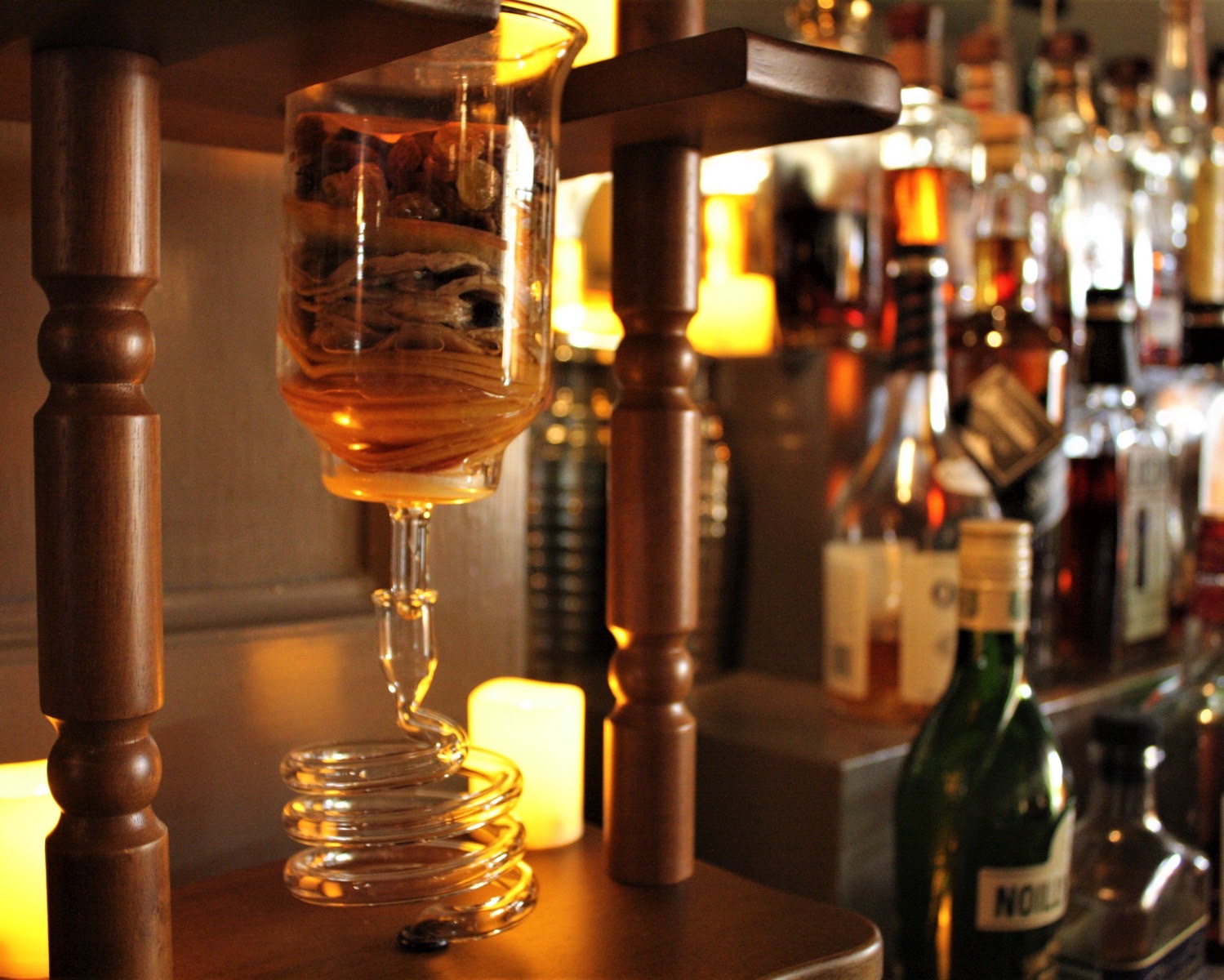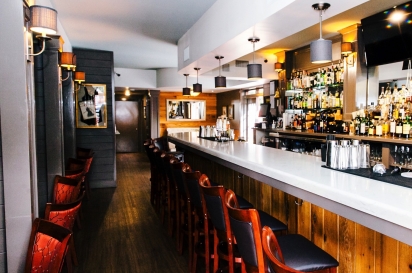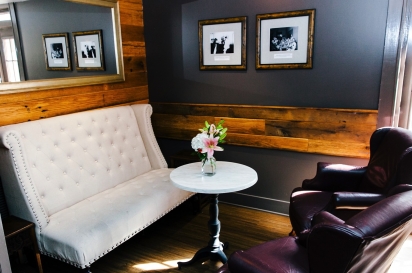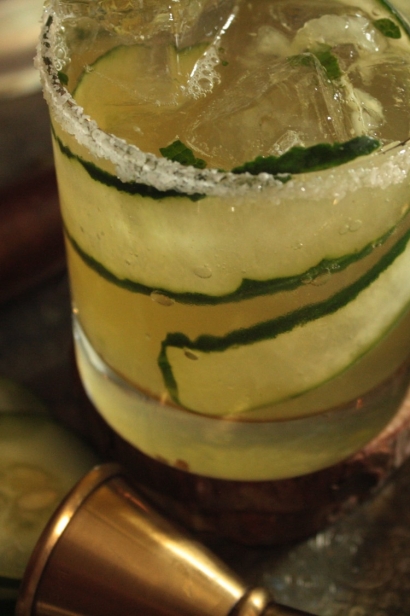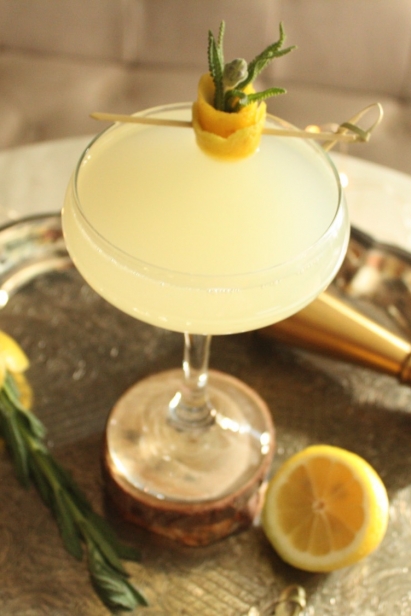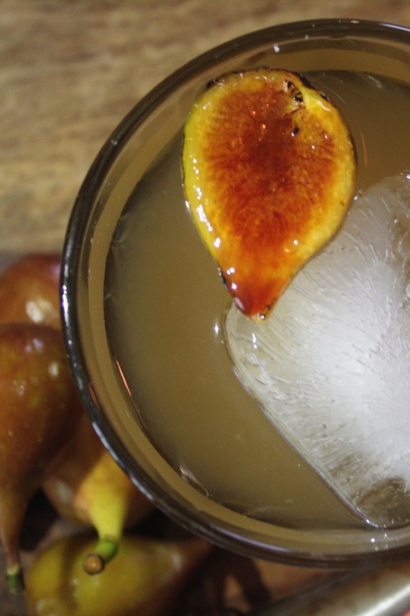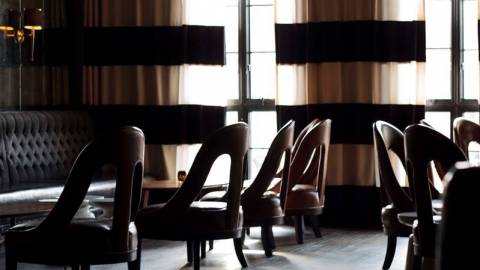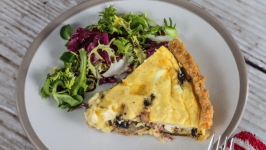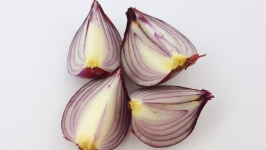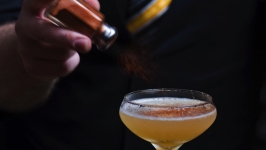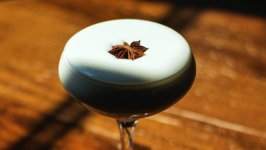Science Meets Art at Tongue & Groove Drinkery in Fairhope
In the bar world, appearances can be deceiving.
Some drinking establishments look like mad scientists’ dens: They're lit by disorienting neon lights and their crowded shelves brim with small, mysterious potions. But, surprisingly, they pump out simple combinations of liquor and soda.
Other bars are decked out with familiar elements like reclaimed wood and plush seating, but their true functions are much more along the lines of alien laboratories.
This combination of novel, science-based techniques and classic, welcoming décor is at the heart of Tongue & Groove Drinkery in Fairhope.
Here, bartenders take beverages one step beyond their familiar formats, often using science. When they opened two years ago, for example, one of the cocktails on their menu was a margarita topped with a salty foam that resembled whipped cream.
“People were almost hungry to see what we’d do next,” bar manager Kyle Kinder says. “It gave us the ability to push the envelope.”
They haven’t taken that mandate lightly.
Pop in on any given Tuesday—Soda Day—and you’ll find an original, fizzy soda that's made and carbonated in-house. It's usually based on locally available, seasonal flavors. This fall, they made a cider-esque soda from Japanese and red pears and pumpkin spice. As you might expect, the delights don’t end at sodas.
Much of the inspiration for their menu is drawn from research into culinary techniques. It’s perfectly normal to watch a bartender pipe foam on top of your drink or heat a cocktail in a beaker-like contraption over a burner. You never really know what you're going to get.
If you’re lucky, you’ll be there on a night where they’re serving one of their house infusions.
Each of these creations—which are made in a spiraling, cold-drip coffee maker—is designed to accentuate flavors already present in the alcohol they’re infusing. Once they infused spiced rum from Opelika's John Emerald Distilling with vanilla, banana and turbinado sugar. It took 14 hours. They served it with macerated black cherries and a splash of orange juice.
But these concoctions typically don’t last long. For one, they're in high demand among guests. Second, all of the adulterated alcohol must be used within 24 hours, according to Alabama liquor laws. This limits production, making these experiments all the more delicious.
Their approach to creating new cocktails is equally culinary and scientific. Typically they build each drink around a particular ingredient, just as a chef builds a dish.
“Most bartenders start with booze first, but we start with what flavor profiles we want to showcase and then move to what alcohol would pair best with those flavors,” Kinder says. “We start from a base ingredient and work backwards.”
Incorporating science into the art of crafting cocktails can make for a captivating show. To better showcase the bartenders’ performance, and give guests a better view of the bottles on their shelves, the bar is elevated one foot higher than normal.
“It’s almost like an open kitchen with a chef’s table,” Kinder says.
The bar's name reflects its precision-meets-pleasure ethos. According to Kinder, Tongue & Groove comes partly from one of his favorite sayings, “whiskey for the tongue, groove for the soul,” and partly from the artistic woodworking style of the same name.
(Tongue and groove joints are used to bond flat pieces of wood together, securely, with slots and ridges instead of nails or glue.)
“Before we opened, we found tongue and groove wood inside the bar,” Kinder says. "That’s a craftsmanship that’s been lost and rediscovered over the past 10 to 15 years.”
Interest in other artisanal skills, such as making craft cocktails, has developed over the same period of time. But Tongue & Groove doesn't want to stop there. They want to keep overlaying bold, new techniques on the foundations of the classic cocktails that they serve. They are constantly redefining their place within the bar scene as they strive to keep learning and growing.
“Constantly evolving is a big thing with us,” Kinder says. “We never want to settle and never want to get bored.”
Judging by what they’ve built so far, they never will. And luckily, neither will we.
Tongue & Groove Drinkery, 77 S Section St., Fairhope.


